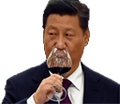I hope you read the fine print of your article
Along with the usual mix of government mismanagement and corruption are two unexpected and devastating events: the war in Ukraine, which has sent prices of grain and oil soaring, and the U.S. Federal Reserve’s decision to raise interest rates 10 times in a row, the latest this month. That has made variable rate loans to countries suddenly much more expensive.
The Chinese Ministry of Foreign Affairs, in a statement to the AP, disputed the notion that China is an unforgiving lender and echoed previous statements putting the blame on the Federal Reserve. It said that if it is to accede to IMF and World Bank demands to forgive a portion of its loans, so should those multilateral lenders, which it views as U.S. proxies
...
China argues it has offered relief in the form of extended loan maturities and emergency loans, and as the biggest contributor to a program to temporarily suspend interest payments during the coronavirus pandemic. It also says it has forgiven 23 no-interest loans to African countries, though AidData’s Parks said such loans are mostly from two decades ago and amount to less than 5% of the total it has lent.
...
In high-level talks in Washington last month, China was considering dropping its demand that the IMF and World Bank forgive loans if the two lenders would make commitments to offer grants and other help to troubled countries, according to various news reports.
...
On this point, experts who have studied the issue in detail have sided with Beijing. Chinese lending has come from dozens of banks on the mainland and is far too haphazard and sloppy to be coordinated from the top.
Some poor countries struggling to repay China now find themselves stuck in a kind of loan limbo: China won’t budge in taking losses, and the IMF won’t offer low-interest loans if the money is just going to pay interest on Chinese debt.
Basically Bejing is asked to swallow the debt when Washington increases interest rates. Its also a lot more unreasonable when private and multilateral debts is a much larger part of Africa's debt pie than bilateral debt with China is


Western chauvinism at display